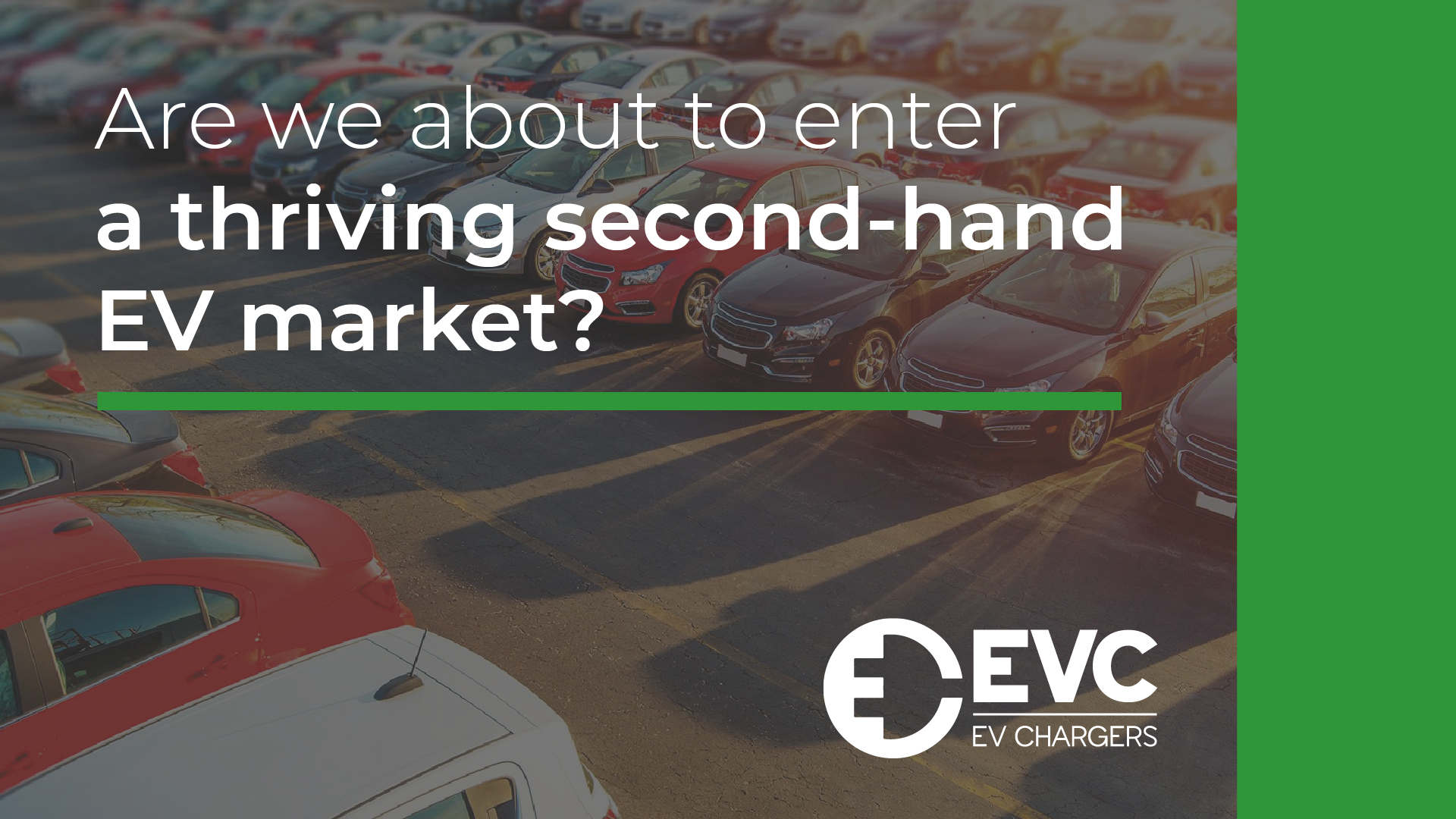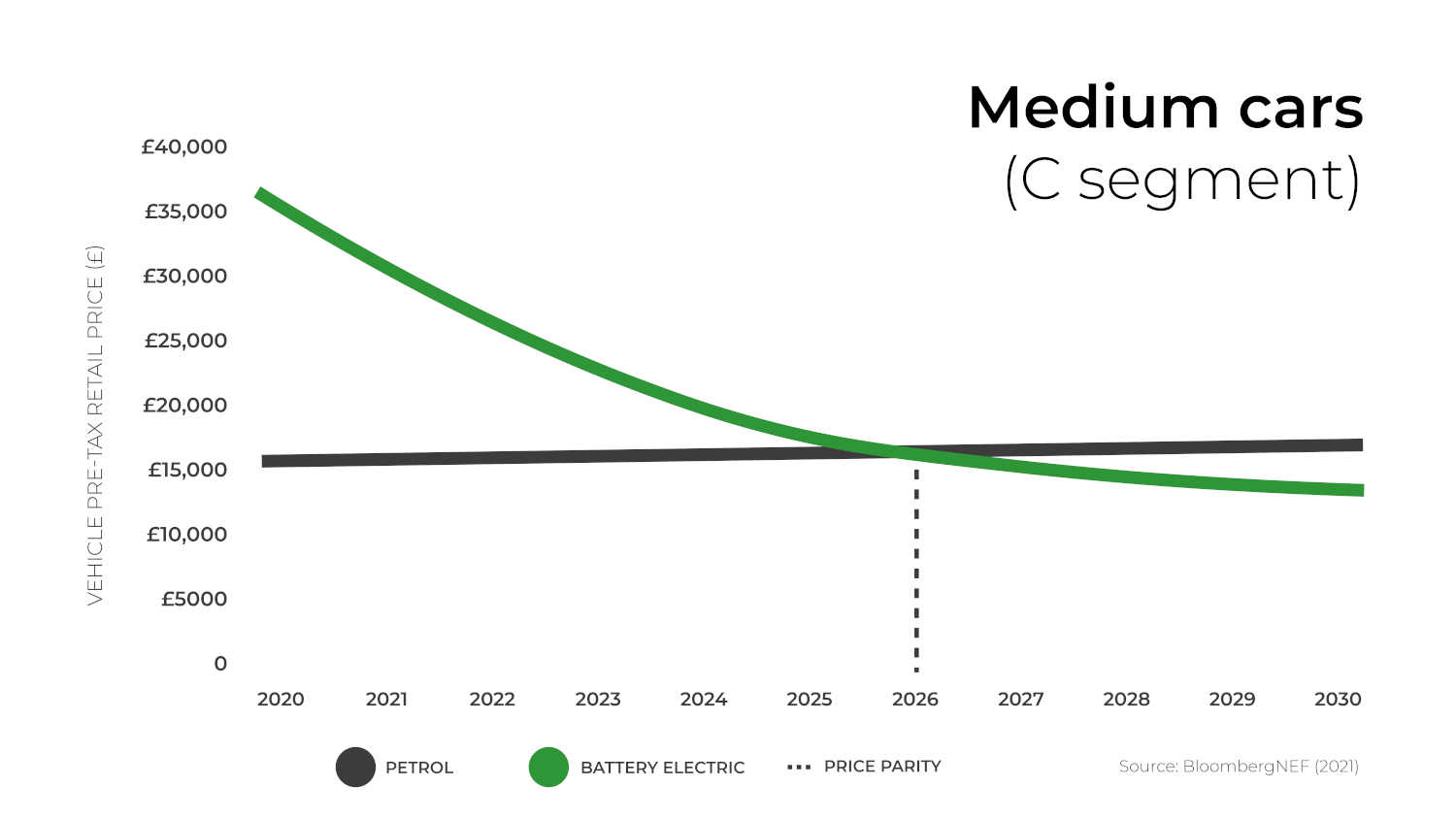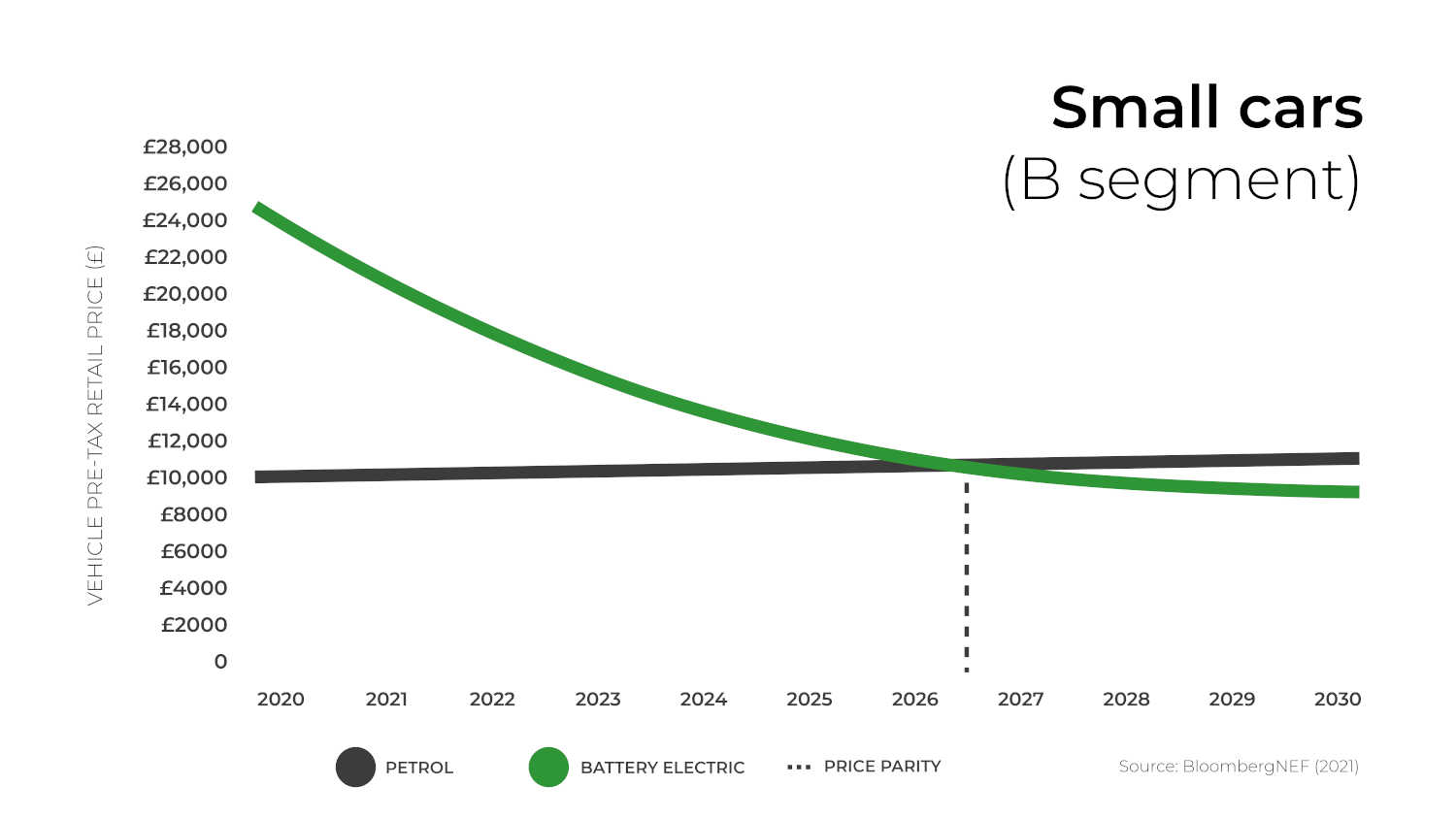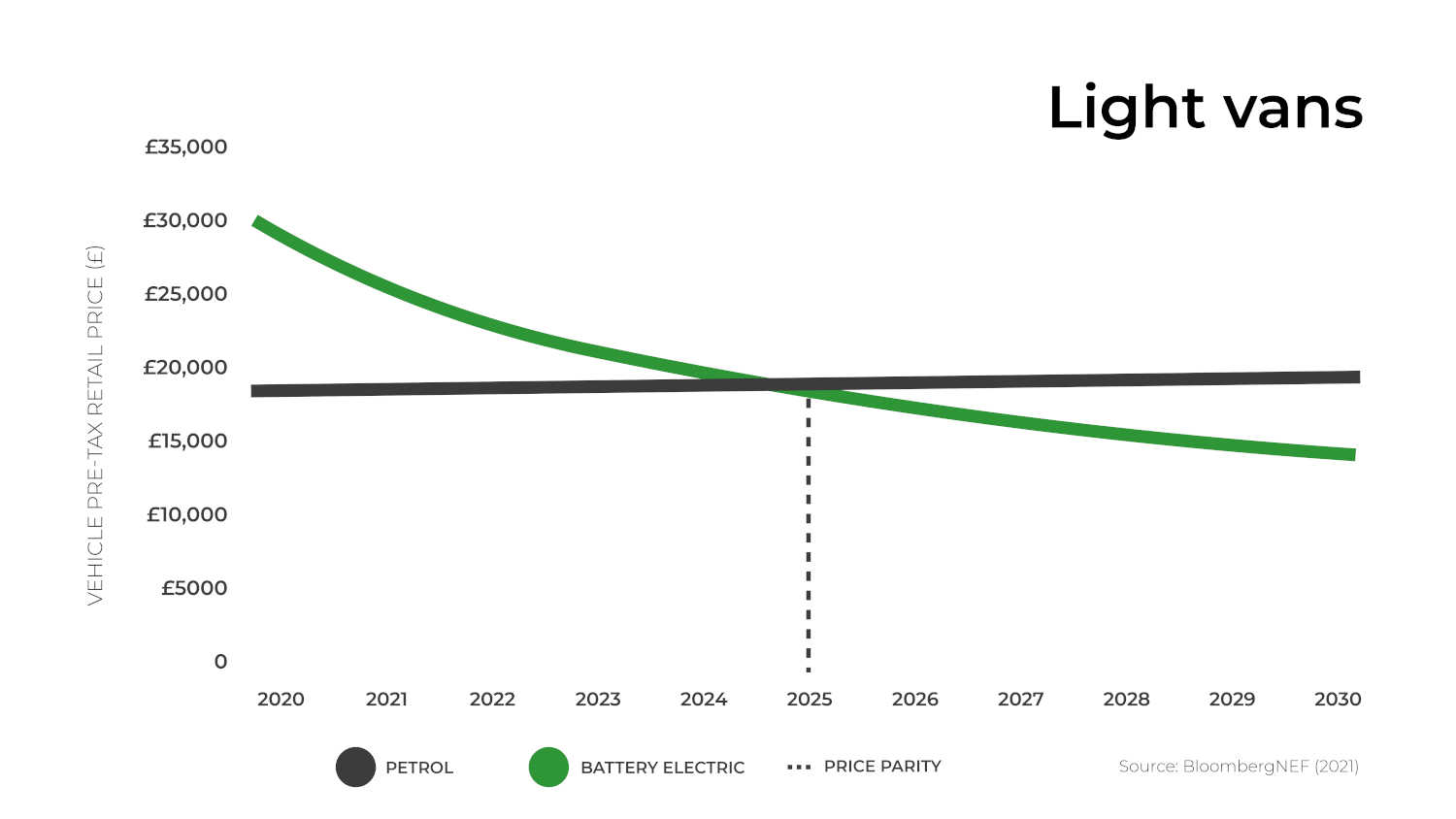Are we about to Enter a Thriving Second-hand EV Market?

When you ask people why they haven’t made the switch to an electric vehicle yet, the same three issues are often cited; charging takes too long, range anxiety and the initial cost of an EV is too high.
In previous blogs, we’ve discussed the common misconceptions involving charging times and range anxiety, so what about cost?
The Cost of New EVs
There’s no escaping the fact that in the previous years, new electric vehicles commanded a much higher initial cost than their petrol counterpart. In the UK, a new electric vehicle would cost £44,000 on average, whereas a new petrol car would set you back on average £28,000. However, with battery prices in decline, and more robust supply chain strategies in place, many analysts agree that price parity between EVs and ICE vehicles will occur sometime between 2025 and 2027.
In fact, with the Government announcing their ZEV (zero emission vehicle) mandate, we can expect the purchase costs of EVs to drop, as more competition enters the market. The ZEV mandate enforces car manufacturers to ensure that a proportion of their sales are zero emission vehicles, with penalties for not achieving this target. This is part of the UK’s initiative to ban the sale of petrol and diesel vehicles by 2030, and achieve net zero by 2050.
Here are the projections of new EV prices against petrol powered vehicles across Europe.



What About Second-Hand EVs?
Research suggests that, generally, a car owner will part with their new car after only 3 – 5 years. This means there is a likelihood that we will start to see more second-hand EVs on the market, which were purchased in 2019, the year new EV sales started to dramatically increase.
A recent report from LV= General Insurance suggests that one-third of used car sales will be electric by 2030. It is estimated that by 2026, when there will be around 1.2 million EVs on the road, zero emission vehicles could make up 15 percent of the second-hand annual sales market. By 2030, this figure will rise to over three million and EVs will account for 31 percent of all annual used car sales.
We’re entering a positive period for electric motoring, and the previous cost barriers are being reduced, meaning more drivers have the opportunity to transition to more environmentally friendly travel.
